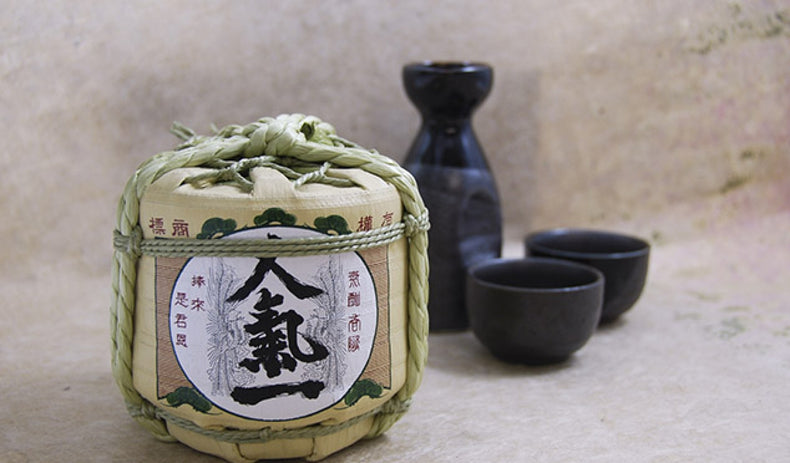Sake Buyer's Guide

Sake is a unique alcoholic Japanese beverage. Sake is made from fermented rice and often called a rice wine, but in fact it’s brewed in a process more akin to beer making.
In the West, we often think of sake as being served warm or hot and most of us have probably only tried it at a sushi restaurant. But this quintessentially Japanese drink is now finding its way onto wine lists in Western restaurants, too.
Sous Chef is lucky enough to have one of the few qualified sake sommeliers in the UK as a director. So we’ve put together a sake buyer’s guide to help demystify this Japanese drink. Read on to find out what the different types of sake are and how best to enjoy them.
Rice Milling Percentage
Sake is made using a special fermentation culture, called koji. Koji needs starch to convert into sugar. The sugar is then converted into alcohol.
The starch the koji needs is found right in the centre of rice grains. So the rice is milled, or polished, to expose the starch. The more of the rice is milled, the more starch is exposed. The more starch is exposed, the quicker the fermentation process and more of the rice is converted into alcohol. This results in a purer tasting sake.
The rice milling percentage is called seimaibuai in Japanese. It’s also known as the ‘rice polishing ratio’ or ‘rice milling rate’. The percentage shows how much of the rice grain is left after the milling process. It is this percentage that dictates the type of the finished sake.
A lower rice milling percentage - e.g. 50% and lower - was traditionally used to indicate higher quality sakes. However, modern sake brewing techniques allow manufacturers to be more creative with rice milled to different ratios. This now means that a sake can be viewed as premium and highly sought after even if it’s made with rice that isn’t milled to the core.
Sake Styles and Grades
Sake is not only categorised by rice milling percentage; it is also divided into two distinct styles.
Fortified style sake – a small amount of distilled is alcohol added at the end of brewing. Typically no more than 10% of the weight of sake rice used to brew the sake, though it can be even less.
The added alcohol enhances some aroma and flavour properties in the sake, and makes it lighter on the palate than some pure sakes. Stability is also increased, meaning that fortified sakes retain their quality for longer than pure rice sakes both before and after opening.
Pure rice style sake – nothing extra is added at the end of the brewing process. They tend to have more complex layers of aroma and flavour, and are much more influenced by the variety of the rice used and the terroir in which the rice was grown.
Pure rice style sakes are better suited to being served chilled or at room temperature. This style of sake can be easily identified by the word junmai.
Each style is then further divided into types or grades. The following table shows the range of rice millling percentages and how they relate to the different grades. Examples of sakes available from Sous Chef are shown in their corresponding grades.

Serving Temperature
If you’ve only tried sake in a sushi restaurant, chances are you’ve only had it served warm. However, many sakes are equally enjoyable at room temperature, or even chilled. A general guide is as follows:
Futsushu & Honjozo – gently warmed to 50°C is the ideal temperature for sake of these grades. The best way to warm sake is to use a hot water bath. Futsushu & Honjozo sakes can taste a little rough or pungent at room temperature. Gentle heating helps to break down some of the harsher components, making the sake smoother and more comforting to drink.
Junmai – room temperature or very gently warmed to between 30 and 40°C
Ginjo, Daiginjo, Junmai Ginjo & Junami Daiginjo – best served chilled to between 10 and 5° These sakes tend to be fruity and fragrant, and these aroma compounds are very delicate. If they get too warm, the compounds break down and the sake can become unpalatable. You can refrigerate the sake or use a cold water bath with a few ice cubes.
Pairing Food with Sake
It’s only recently that sake food pairings have become popular. Even in Japan sake has traditionally been drunk on its own, or perhaps with the odd snack. The complex aromas of sake, and its underlying salty-umami qualities, actually make it a fantastic partner for all kinds of food.
Futsushu & Honjozo – simple grilled foods like yakitori, white fish, aubergine or asparagus. Also great with hot appetiser/ bar snack type foods like edamame beans.
Junmai – Chinese spring rolls and dishes with rich, soy-based sauces. Spicy barbecued meats are also a good partner for junmai sakes.
Ginjo, Daiginjo, Junmai Ginjo & Junami Daiginjo – ideal partners for sashimi. Beer and wine can actually emphasise fishy aromas in raw fish, whereas these fragrant sakes complement the fish. They also partner well with steamed green vegetables, salads and shellfish.
Have you found the perfect sake and food pairing? We’d love to hear from you in the comments!
Browse Sake for our full range of sakes and authentic Japanese sake sets.


